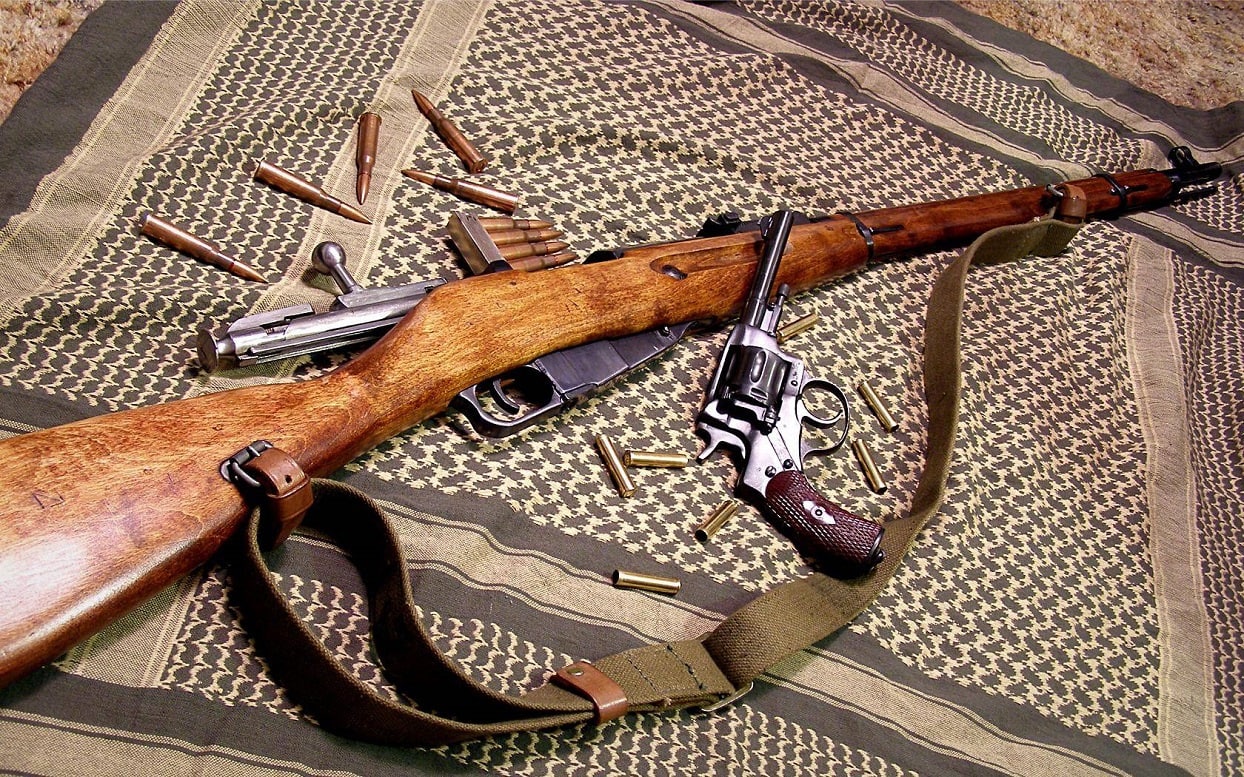If you’ve seen the 2001 movie Enemy at the Gates — starring Jude Law, Ed Harris, Joseph Fiennes, Rachel Weisz, Bob Hoskins, and Ron Perlman (best known as the male lead co-starring with Linda Hamilton in the late 1980s CBS TV series Beauty and the Beast) — then you’ve seen the Mosin-Nagant 7.62x54mmR sniper rifle in cinematic action.
(Subscribe to Our YouTube Channel Here. 19FortyFive publishes original videos every day.)
Enemy at the Gates is a Hollywood-embellished retelling of the real-life exploits of Vasily Zaitsev, hero of the Battle of Stalingrad, who did in fact use the Mosin-Nagant to target his way to fame against the Wehrmacht. Let’s now take a longer look at the infantry and sniper rifle that worked so well both for and against the Red Army in WWII – or as the Russians still prefer to call it to this day, “The Great Patriotic War” (Velikaya Otechestvennaya voyna/ Вели́кая Оте́чественная война́).
Imperialist/Czarist Origins!
An inconvenient truth for the Bolsheviks is that the M1891 Mosin-Nagant is not a Soviet-era invention, but rather a weapon designed during the Czarist era, and co-designed by a Czarist Russian officer to boot. More specifically, it is a combination of designs by then-Russian Army Captain (eventual Maj. Gen.) Sergei Ivanovich Mosin (1849 – 1902) and Belgian Léon Nagant; the latter’s primary contribution was the feed system.
The weapon was officially designated the “3 line rifle, model 1891.” The bolt-action rifle employed an internal 5-round magazine and was first blooded in combat during the Russo-Japanese War of 1904-1905. That war didn’t go well for Russia, but the humiliating defeat did not besmirch the reputation of the “Mosin’s Rifle” (vintovka Mosina/ винтовка Мосина) in the process.
The rifle’s 7.62x54R cartridge is a fully rimmed cartridge firing a .30 caliber ball round that, according to the Lynx Defense webpage, “slightly edges out the 7.62x51mm NATO round in most categories when looking at supplied numbers in comparable barrels.” As for the rifle itself, that same website provides the following information:
“The Three Line rifle would be fielded by the Russian Empire until 1930 when an overhaul of the design was made that brought about a few advancements, but the general shape of the Mosin stayed the same. At that point, the M1891 would be known as the M91/30…A vast majority of their former stock was converted into the M91/30. The changes included simplification of the receiver and slight adjustments to the sights. Also, there were changes in the forestock and barrel bands…Following the M91/30, some were taken and given a side-mounted low-power scope and a dog-legged bolt and turned into marksman rifles.
The scope was located close to the centerline of the rifle, thus making it necessary to change the bolt design. These rifles are generally referred to as M91/30 PU.”
Mosin For The Motherland
Non-Communist origins notwithstanding, it was in the hands of the Red Army during the Great Patriotic War that the Mosin-Nagant cemented its reputation in history. Its most famous user was the aforementioned Vasily Grigoryevich Zaitsev, who was credited with killing 225 enemy soldiers and officers, 11 of them were snipers. Granted, some of his credited exploits, such as his duel with the Germans’ Major Erwin König (portrayed by Ed Harris in the movie), may have been apocryphal, but enough of his exploits were real enough to prove to be a true game changer for the Rodina (Родина/ “Motherland”) at Stalingrad, and for his efforts, Vasily was awarded the Order of Lenin, “the Gold Star” medal, and the title of the Hero of the Soviet Union.
Mustering out of the service at the rank of Captain, Zaitsev passed away on December 15, 1991 — coincidentally a mere 11 days before the collapse of the Soviet Union — at the age of 76.
And then there was Lyudmila Mikhailovna Pavlichenko AKA “Lady Death,” the highest-scoring female sniper of all time, with an astonishing 309 confirmed kills. Born in 1916 in Bila Tserkva, a large Ukrainian city south of Kyiv (in hindsight, how’s that for irony), she was one of the lucky 25 percent of female Soviet snipers to survive the War. Like Vasily Zaitsev, she too would be tabbed as a Hero of the Soviet Union.
After Lyudmila survived a wounding in a mortar attack, the Soviet high command, in order to prevent her from being KIA’d and thus granting a propaganda victory to Nazi Germany, pulled her from the front lines and sent her on a propaganda tour. This propaganda tour includeed the United States, whereupon she was warmly received by then-First Lady Eleanor Roosevelt.
Among the more memorable public statements Lyudmila made during her American tour was this: “Gentlemen, I am 25 years old and I have killed 309 fascist occupants by now. Don’t you think, gentlemen, that you have been hiding behind my back for too long?”
Ms. Pavlichenko eventually attained the rank of Major. She subsequently struggled with depression, alcoholism, and apparent PTSD on account of being widowed during the War, and died from a stroke on October 10, 1974 at the way too young age of 58. Two years later, the USSR issued a postage stamp in honor of her 60th birthday.
Mosin Against The Motherland
Much to the chagrin of Stalinists and Iron Curtain apologists everywhere, in addition to being an effective killer for the Red Army, the Mosin-Nagant was used as an even deadlier sniper rifle against the Red Army. “Give them a taste of their own medicine,” as the saying goes, and during the Russo-Finnish War of 1939-1940, aka The Winter War, legendary Finnish sniper Simo Häyhä, the highest-scoring sniper of all time, bar none, did just that. The so-called “White Death” racked up a mind-boggling 542 kills against the Red Army invaders in a mere 98 days. Vänrikki (Second Lieutenant) Häyhä’s weapon of choice? ‘Twas a Finnish version of a Mosin-Nagant. Even more amazingly, he pulled off all these kills entirely with iron sights, i.e. without the aid of a scope.
Mr. Häyhä passed away on April 1, 2002, at the ripe old age of 96.
Personal Shooting Impressions
I purchased my own Mosin-Nagant in November of 2008, for a dirt cheap $89.00, during the wave of “panic-buying” of AK-platform rifles subsequent to the election of Barack Obama; the Mosin was what I settled for as a “consolation prize” of sorts after my local Turner’s Outdoorsman (I was living in L.A. at the time) had accordingly run out of Kalashnikovs. Well, those measly 89 bucks sure gave me a lot of proverbial bang for the buck.
Though the ammo could be a bit pricey, I could often find good deals on surplus ammo at local gun shows. Granted, a lot of the more affordable ammo was steel case and had corrosive primers. It was an extra incentive to clean my weapons in a timely fashion subsequent to my range sessions, and the Mosin was certainly more than rugged enough to handle the extra abusive rounds.
As far as what it is like to fire, the 7.62x54R rounds certainly packed a wallop. Not as big a wallop as, say, firing the Barrett .50 cal, mind you, but still, the shoulder could take quite a pounding, especially if you weren’t either using a recoil pad or wearing thick winter clothing — luckily I was sporting a thick cashmere greatcoat for my December 2009 outdoor range session with the Mosin at Burro Canyon Shooting Park. An ice-pack and/or an on-call masseuse and/or chiropractor aren’t an absolute must for an extended shooting session, but they’re certainly advisable!
But that heavy recoil aside, and in spite of the age of the weapon, and in spite of how loosely the bolt’s action rattled as I racked it back and forth, the old babushka was super-accurate. I didn’t do the more detailed and methodical accuracy tests that I typically do for my handgun reviews, but nonetheless, I marveled at how easy it was to hit what I was aiming at with a distance of 100 yards. I would estimate that I’ve fired maybe 1,000 rounds through the old Russkie gal.
Nowadays, Mosin-Nagants aren’t selling for anywhere near as dirt cheap as they were, back in 2008. That said, if you have the spare cash, whether dollars or rubles, I do recommend that you gun enthusiasts out there buy one if y’all haven’t already done so, for the sake of owning a high-powered piece of history.
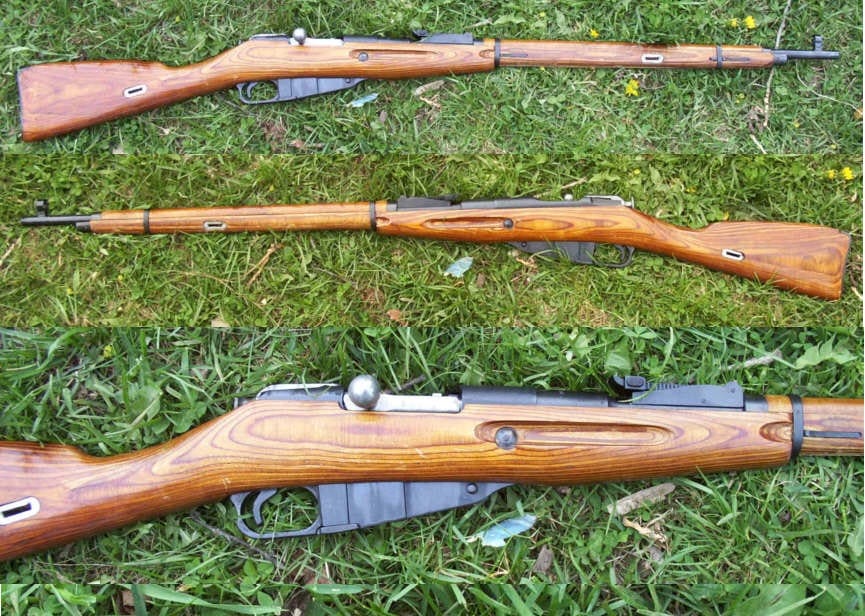
Mosin-Nagant. Image Creative Commons.
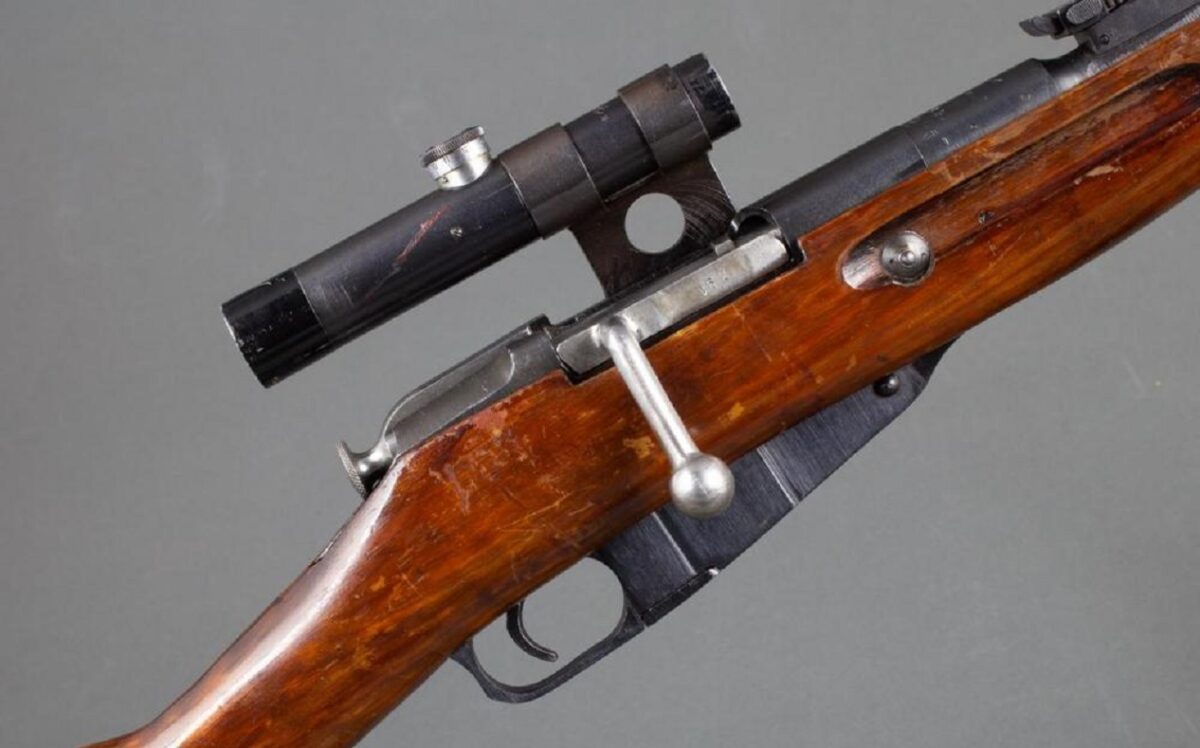
Mosin–Nagant Rifle. Image Credit: Creative Commons.
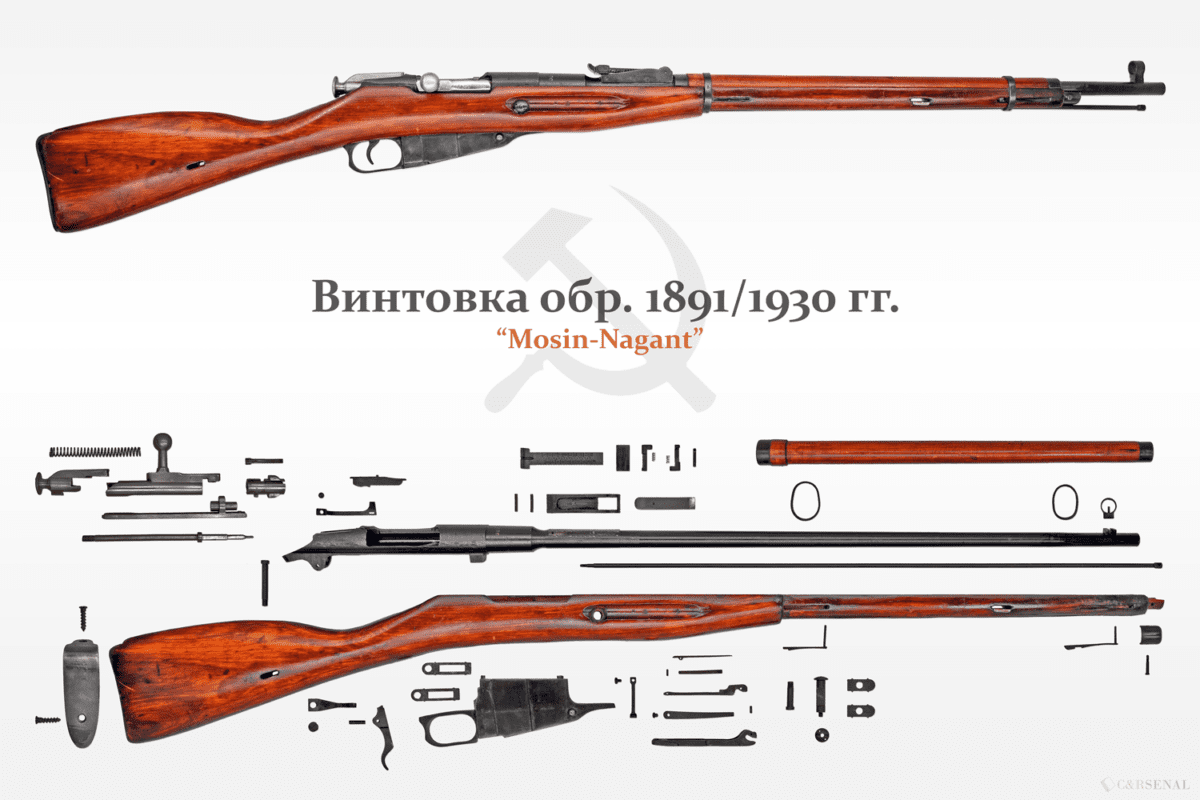
Mosin–Nagant Rifle. Image Credit: Creative Commons.
Bonus: Meet the M16 Rifle
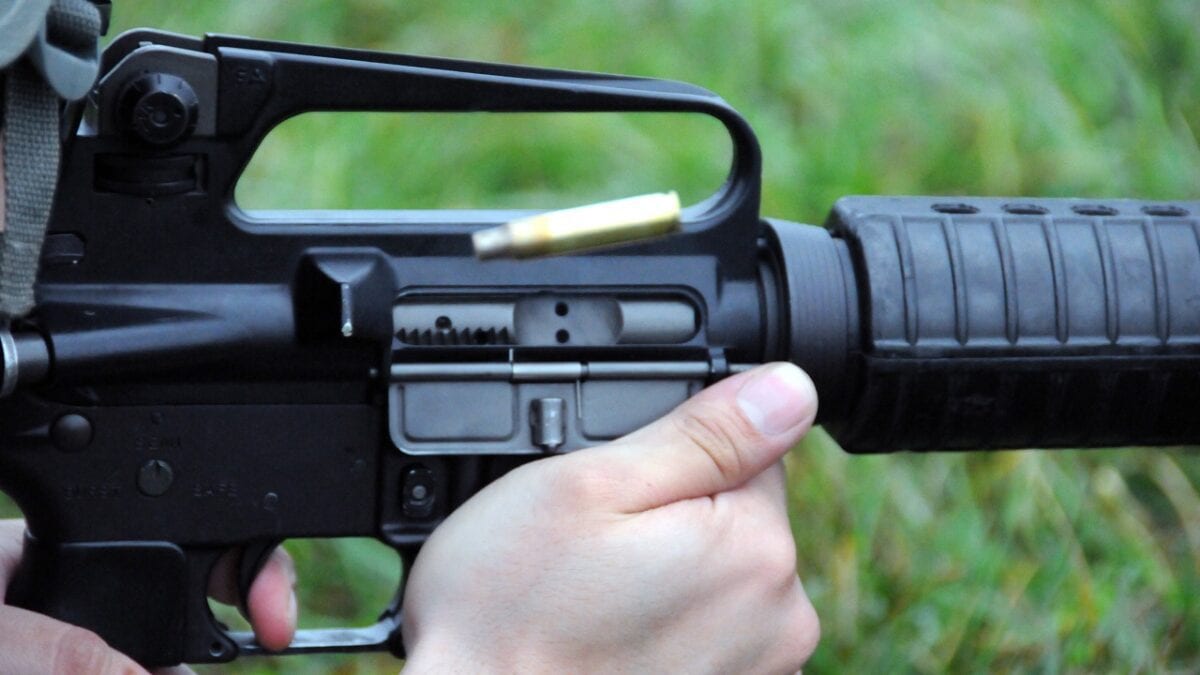
Sgt. Marco Gutierrez, a public affairs specialist from Indianapolis, Indiana assigned to the U.S. Army Reserve’s 350th Public Affairs Detachment, fires his M-16A2 at the range on Camp Atterbury, Indiana Nov. 3. Army Reserve Soldiers qualify on their individual assigned weapon once a year in order to be “mission capable” should they need to deploy.
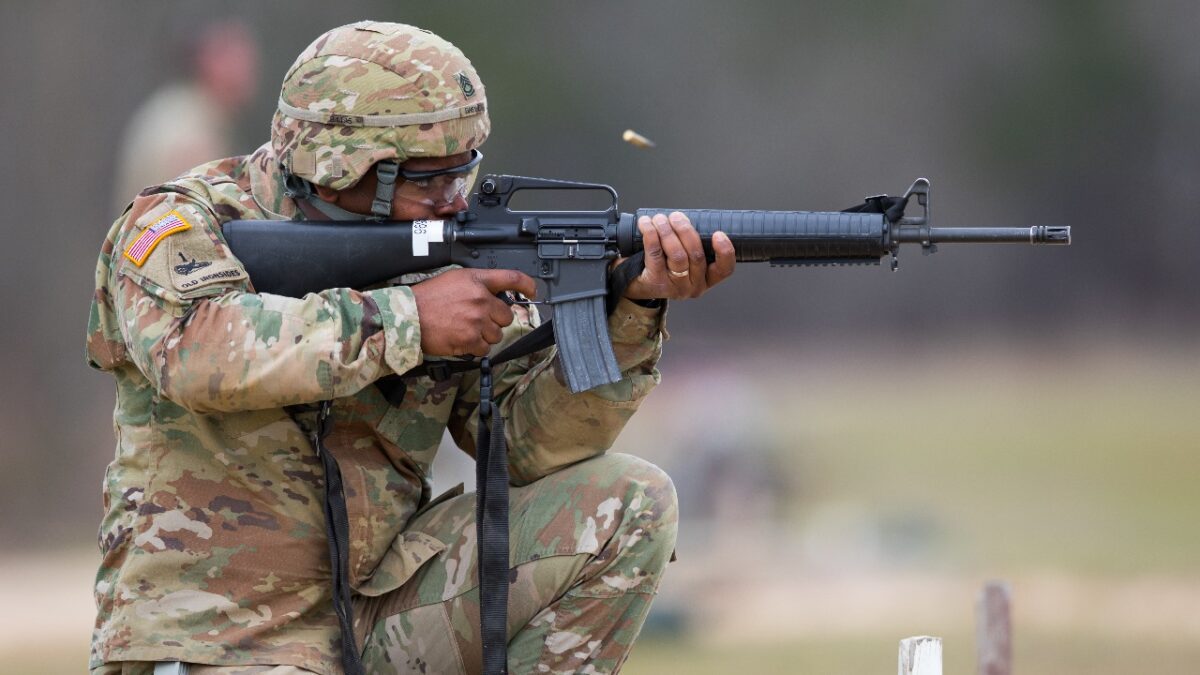
U.S. Army Reserve Sgt. 1st Class Harrison Brewer, G4 Chief Movements Supervisor for the 335th Signal Command (Theater), fires an M16 rifle on a range at Fort Gordon, Georgia, March 8, 2019. Soldiers from the 335th Signal Command (Theater) headquarters completed warrior tasks and battle drills to include weapons qualification, grenade practice and roll over training during a four-day training designed to increase their warfighting abilities. (U.S. Army Reserve photo by Staff Sgt. Leron Richards)
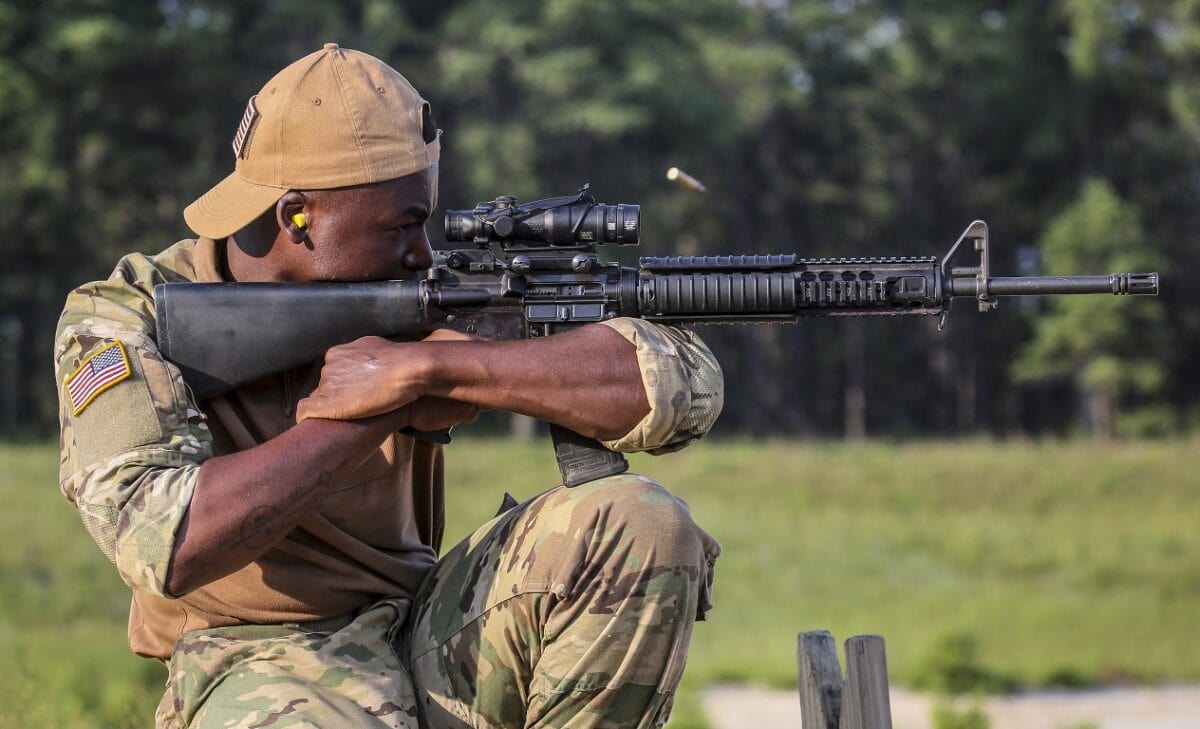
U.S. Army Private 1st Class Andre Matthews fires an M16A4 rifle during the Squad Designated Marksman Course instructed by the New Jersey Army National Guard’s 254th Regiment on Joint Base McGuire-Dix-Lakehurst, N.J., July 20, 2017. The course teaches the Squad Designated Marksman to directly support their squad with well-aimed shots at ranges slightly beyond the normal engagement distances for riflemen, up to 600 meters. The 254th Regiment is based out of the Regional Training Institute, National Guard Training Center, Sea Girt, N.J. (U.S. Air National Guard photo by Master Sgt. Matt Hecht/Released)
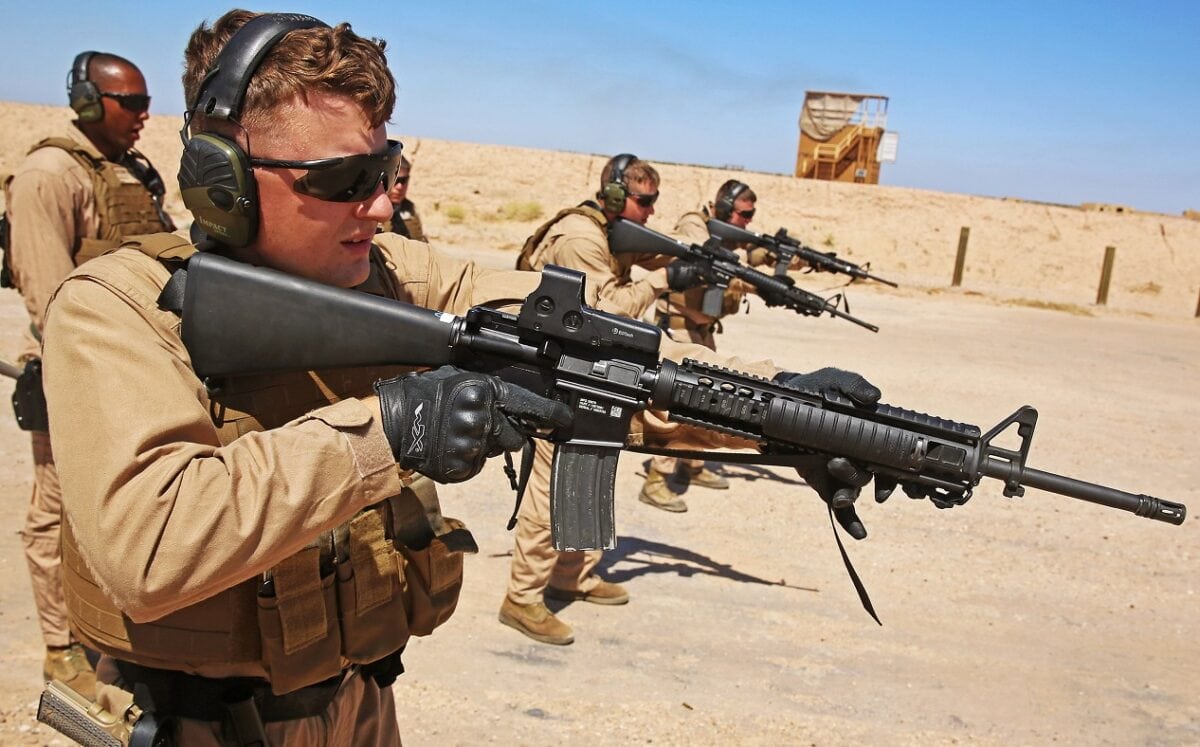
M16. Image Credit: Creative Commons.
Christian D. Orr has 33 years of shooting experience, starting at the tender age of 14. His marksmanship accomplishments include: the Air Force Small Arms Ribbon w/one device (for M16A2 rifle and M9 pistol); Pistol Expert Ratings from U.S. Customs & Border Protection (CBP), Immigration & Customs Enforcement (ICE), and the Federal Law Enforcement Training Center (FLETC) Criminal Investigator Training Program (CITP); multiple medals and trophies via the Glock Sport Shooting Foundation (GSSF) and the Nevada Police & Fires Games (NPAF). Chris has been an NRA Certified Basic Pistol Instructor since 2011.

